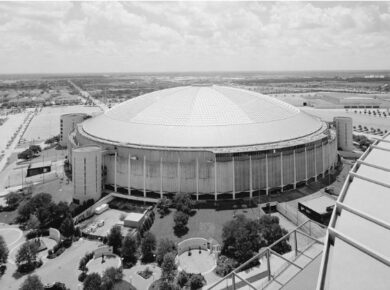Googie architecture
Louis Armét (October 26, 1914 – October 11, 1981) was an American architect and strong proponent of Googie architecture in Southern California during the mid-twentieth century. Armét moved to Los Angeles, California at the age of thirteen, where he attended the USC School of Architecture. He co-founded the Armét & Davis architectural firm with Eldon Davis in 1947.

Photo: Courtesy Yelp/Danny P (top)/Babette C (bottom left)/MJ (bottom right)
Armét & Davis were known as the fathers of the California coffee shop for midcentury designs inspired by the Space Age and the region’s car culture. When America was in love with aerodynamic design, Davis devised a concept for Norms restaurant that made it appear poised for liftoff.
Built on La Cienega Boulevard in 1957, Norms had many features that came to typify the whimsical style of architecture known as Googie — a vaulted roof that resembles a flying wing, a room-length dining counter and an attention-grabbing vertical neon sign with roots in Las Vegas kitsch.

Author: Unknown
The architects were chief proponents of Googie, named for a now-defunct cafe in West Hollywood, and derided by critics in the 1950s and 1960s “who didn’t think a lot of our work but we didn’t care,”. With their soaring and exaggerated roof lines, their buildings appeared to defy gravity, a structural innovation for which Davis was largely responsible.

“They brought modern architecture to the daily life of people,” said Alan Hess, who wrote the 2004 book “Googie Redux.” “There’s a great deal of interest and affection for their buildings,” Hess said. “The work of Armet and Davis is as significant to Southern California as Richard Neutra or Rudolph Schindler.”
Although Davis had a major role in popularizing what became known as Coffee Shop Modern, he was pragmatic about the lasting value of the more than 4,000 coffee shops his firm designed. “I can’t see why they’d try to preserve any of them,” he told The Times in 1986. “We would have liked to have made them more aesthetic, but we were just designing them to sell hamburgers.”
About the Author:

Bruno Dursin – Managing Director at Believe in Steel. Bruno has more than 30 years of experience in promoting steel & steel solutions. His clients benefit from his extensive network within the building industry.



